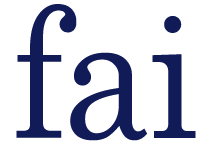1. Remittances: Why have such rapid increases in remittances not resulted in noticeable improvements in economic growth in the recipient countries? Michael Clemens and David McKenzie investigate possible answers in a new working paper. The World Bank - Development Impact Blog
2. Poverty in the US: Over the past 30 years, government spending on the poorest Americans dwindled - those living far below the poverty line now receive less government assistance than they did in 1983 and spending has shifted to the relatively more well-off. Slate
3. Cash Transfers: After receiving $150, five days of training, and intensive supervision, ultra-poor women in Uganda doubled their business ownership and their incomes, according to a newly published study. Chrisblattman.com
Week of May 12, 2014
1. Bank Transparency: Wal-Mart is known as a low-cost retailer, but customers of the independent banks inside its outlets are among America's highest payers of bank fees. The 5 banks with the most Wal-Mart branches ranked among the top 10 in fee income as a percentage of deposits in 2013. The Wall Street Journal (paywall)
2. Financial Sector Investment: A new report finds that the financial sector is now the largest beneficiary of World Bank Group investment, receiving $36 billion between July 2009 and June 2013 the IFC. Over the same period the World Bank’s public sector arms committed $22.1 billion to health and $12.4 billion to education. Bretton Woods Project
3. Credit: "There are two housing markets in America. It's not one for student debtors and one for non-student-debtors. Rather, it's one market for healthy corporations, who are buying at a historic rate; and one market for families, which is still quite sick." The Atlantic
Week of May 5, 2014
1. Mobile Money: New data show the potential of Bitcoin and mobile money for disruption in payments and transfers systems in the developing world (particularly sub-Saharan Africa) has a long way to go before becoming a reality. Business Insider
2. Payments: Despite the rise of electronic payment methods, cash is still king in the US. According to the Federal Reserve, cash is the most popular consumer payment instrument, particularly for small-value transactions. Federal Reserve Bank of San Francisco
3. Financial Inclusion: Financial Inclusion Insights (FII) announced the launch of its 2014 Open Data Challenge. Participants can win up to $5000 and a chance to present their innovative analysis of financial inclusion indicators through FII's conferences and network. Financial Inclusion Insights
Read MoreWeek of April 28, 2014
1. Poverty in the US: Despite improved living standards, the poor in the US have fallen further behind the middle class and the affluent in both income and consumption. In addition, the cost of many services crucial to escaping poverty — including education, health care and child care — has soared. The New York Times
2. Behavioral Economics: A new report illustrates how policy makers and human services administrators can draw on the principles of behavioral economics to design programs to better serve poor and vulnerable populations in the US. OPRE
3. Financial Services: Large financial institutions continue to move away from brick-and-mortar branches in favor of online banking – banks closed a total of 281 branches in the US in the first three months of 2014, representing approximately 2% more total closures in branches than last year. Quartz
Week of April 21, 2014
1. Payments: Wal-Mart launched Walmart-2-Walmart this week – a new service that will allow customers to send and receive up to $900 at a time at more than 4,000 stores. The Wall Street Journal
2. Financial Inclusion: Shawn Cole of Harvard Business School stresses the importance of design in serving poor customers, specifically how the process of creating products meant to “bank the unbanked” is unique. CFI Blog
3. Cash Transfers: Christopher Blattman and Paul Niehaus discuss the latest developments in the world of cash transfers, including how they can serve as index funds for international development. Foreign Affairs
Read MoreWeek of April 14, 2014
1. Digital Payments: Facebook is finalizing preparations to begin offering financial services to its users, allowing them to store and exchange money. CNBC
2. Remittances: A new report on the impact of remittance fees on Africa's development investment claims that reducing charges to 5% would increase transfers to the continent by $1.8 billion annually. Overseas Development Institute
3. Financial Inclusion: The next generation of ATM innovations (sending money to someone, paying bills, and loading a portion of a check) may not require a bank account and could potentially provide alternative financial services to the unbanked. American Banker
Read MoreWeek of April 7, 2014
1. Savings: FAI affiliate Ignacio Mas challenges us to step back from usage data and rethink how we approach the development of savings products for the poor. Center for Financial Inclusion
2. Behavioral Economics: According to Helaine Olen, Americans' financial woes have "more to do with the outside economy than their inner psyche." Bloomberg
3. Payments: New research presents findings on who is using prepaid debit cards and why. One suprising finding? it's not necessarily the unbanked - 7 in 8 users have or previously had a checking account. The Pew Charitable Trusts
Read MoreWeek of April 4, 2014
- David Evans from the World Bank provides a nice round up of key publications at the 2014 Pacific Conference for Development Economics, including papers on cash transfers and wages in Mexico, commitment savings products in the Philippines, and flexible microcredit design in Bangladesh.
- Researchers at the University of Colorado – Boulder analyzed findings from 188 studies (and over 585,000 combined participants) on the connection between financial literacy and financial decisions. From this meta-analysis, they found that education programs that are timed to be close to the financial decision have the biggest impact but that most interventions show weak links between education and financial decisions.
- You may think of savings groups as typically found in developing countries but this NPR piece highlights the ways they are used among communities in the US to provide access to savings and credit.
- A new study from the California Reinvestment Coalition reports on the impact of ATM fees for welfare recipients that use electronic debit cards. Over 96% of recipients use the cards and are often charged fees of $3-4 per transaction. Bank of America earned $3.6 million from welfare transactions in one year.
- FAI affiliate Igancio Mas discusses how the very words that describe financial products can change their usage and perception. For example, many think of “savings” as something you do when you have excess money instead of a useful tool for dealing with emergencies.
- NPR’s Marketplace recently reported on workplace lending – when borrowers take out a loan through their employer, with repayments taken directly from paychecks.
- The IRS ruled that virtual currencies are property and subject to tax, which some say severely limits the potential of Bitcoin as an alternative currency since it is no longer fungible.
- Eva Vivalt of NYU’s Development Research Institute posted a blog on ways to improve impact evaluations that draws on data from over 400 studies in an AidGrade meta-analysis.
Week of March 25, 2014
- The National Consumer Law Center (NCLC) published a new report analyzing claims that big data and predictive algorithms will create alternative credit scores and new options of accessing credit for the unbanked. NCLC concludes that more customer data does not necessarily equal good customer data or accurate scores and those scores may be violating federal laws.
- There were a few big announcements recently in the mobile money world – Safaricom and Airtel jointly bought out yuMobile, the third-biggest telco in Kenya, T-Mobile announced it will offer financial services in Poland through a partnership with Alior Bank, and MTN partnered with Ecobank to allow customers to transfer money between accounts and withdraw cash from Ecobank ATMs in 12 African countries.
- In a recent webinar, Bankable Frontier Associates discussed key findings from four recent CGAP and Better than Cash Alliance case studies that examine the e-payment experience of cash transfer programs in low-income settings in Kenya, Uganda, Haiti and the Philippines.
- When RCTs include treatments at the village or district level, what happens to individual consent? Jed Friedman discusses the ethics of consent and trials in a post for the World Bank’s Development Impact Blog.
- Both The New York Times and WNYC profiled the lives and financial hardships of individuals working low-wage jobs. While the Times looks at Chattanooga, TNand WNYC at New York, the struggles of households to get by share commonalities with each other and with those of the US Financial Diaries project.
- FAI affiliate Daniel Rozas partners with Gabriela Erice on a new paper for the European Microfinance Platform that shows at MFIs and banks in Bolivia, Nicaragua, and Pakistan 50-75% of savings accounts at MFIs and banks in Bolivia, Nicaragua, and Pakistan are empty and balances of accounts with funds are at least double the average reported size.
- Tom Murphy covers the recent debate on why remittances have fallen in the US-Mexico corridor and includes excerpts from a recent Felix Salmon article on this topic, Tim Ogden’s blog response to Salmon, and Michael Clemens and Tim’s work on migration as a household investment strategy.
Week of March 14, 2014
- CFSI published its Prepaid Industry Scorecard, which analyzes 18 prepaid cards and assesses their level of quality based on criteria related to transparent communication and marketing, overall value for the customer, and ability to expand financial access.
- While mobile phone penetration in Ghana is over 90%, up-take of mobile money services lags behind, particularly in rural areas. IMTFI investigates why this is the case and also looks at the role of the private sector and government in promoting the use of these services.
- The ILO’s Microinsurance Facility issued its 2013 annual report with the theme “Protecting the Working Poor.” The report not only summarizes the work of the organization over the last year but also looks at shifts and trends in the microinsurance industry since 2008, focusing on the commercial viability of products and their value to customers.
- Elisabeth Rhyne, Managing Director for CFI, turns a critical eye to the current state of the microfinance infrastructure, focusing on key organizations that set standards and provide information globally.
- Kevin Starr and Laura Hattendorf from the Mulago Foundation write a compelling piece for SSIR that reminds readers to temper the hype surrounding GiveDirectly and to not mistake “an important experiment for a proven solution” to poverty. Also see Chris Blattman’s response to the SSIR piece.
- According to the IFC, “The total supply of formal finance to women-owned MSMEs [micro, small and medium enterprise] in 2012 is around Indian rupees 2.31 trillion ($42 billion). This resulted in a finance gap of Indian rupees 6.37 trillion ($116 billion), or 73 percent of total demand.” The organization’s new report on the state of women-owned MSMEs in India looks at why this gap in demand exists and offers recommendations on improving female entrepreneurs’ access to finance.
- We appear to be in another cycle of the “RCT debate”: see recent posts from Lant Pritchett, Chris Blattman, Rachel Strohm, and David Mckenzie. Here are couple of posts from FAI Managing Director Tim Ogden from the last cycle: on External Validity and Transcendental Significance critiques.




